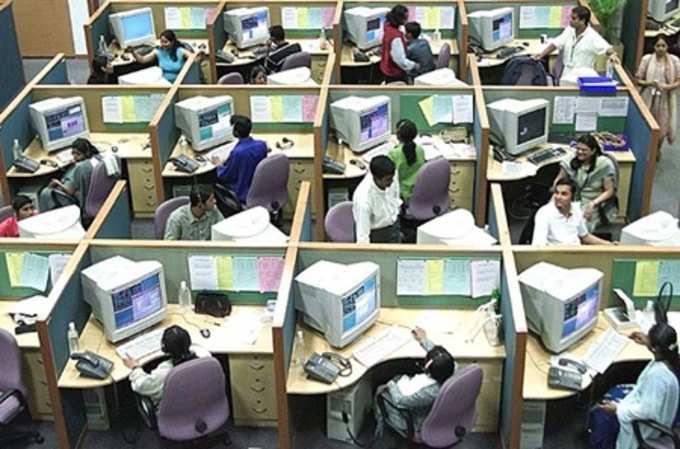 In its recent Annual Salary Increase Survey in India, consulting firm
In its recent Annual Salary Increase Survey in India, consulting firm At 10.8%, Aon puts it among the top 5 sectors which are likely to give their employees the maximum pay hikes this year. We spoke to Anirban Gupta, senior consultant at Aon Hewitt, to decode the relevance of this number further and understand how the industry has been moving forward for the past few years.
Could you tell us what a 10.8% salary increase projection means for IT employees in India?
The dollar has appreciated significantly against all major currencies which positively impacts the cost structures IT companies in India are running and creates greater headroom for salary increases.
Secondly, the face of the IT industry is changing dramatically. The focus is moving away from just implementing and maintaining technology solutions for organizations to being able to solve real client problems. What this means is that the talent requirements are also changing today. The new talent organizations are looking for having a demand supply mismatch and there is a fierce battle for that talent in the market place which is making organizations invests in salary increases.
Since the number this year seems to have been driven up by product companies more than service companies, how will this disparity play out in salary hikes across the whole industry?
Fundamentally the talent that gets employed in the IT product sector versus the IT services sector is different. One from a skill perspective, IT product companies breed specialists in technologies whereas IT services build generalists which can aid internal deployment. Apart from that while Java is Java across sectors, the key differentiators between the talent in IT products and IT services is that IT product organizations need talent who have greater business acumen, superior problem solving skills and the ability to conceptualize new solutions. Whereas IT services for a large portion of the pyramid need employees who are solid “doers”. For the most part IT product and IT services talent isn’t fungible,. There obviously are pockets of technical specialization which are fungible, but for the most part, there exists a Chinese wall.
Could you give us the attrition figures for the IT industry for this year, and how do you analyze the general attrition trend?
Attrition in the last year was 16.7% which was higher than what we saw in 2014. We see three major factors which are impacting it:
1. There is a greater push of organizations setting up captive setups in India which will hire from existing organizations
2. The startup environment is extremely robust and they are targeting the product sector organizations for talent
3. The greater need for skill specific talent is forcing organizations to look at buying talent with ready skill profiles as opposed to training them as they have done in the past given the fact that the tech cycles are getting significantly shorter
Most of the manufacturing companies have projected a drop, while service companies have shown a bigger increase in salary hikes than previous year. Do you see this gap between services and manufacturing sectors narrowing down going forward, and what would it mean for the hi tech industry?
The fundamental markets that hi tech caters to versus manufacturing are different. Hi tech in India caters predominantly to the export market which is extremely sensitive on the US dollar. If the longer term secular view is that the rupee will continue to depreciate versus the dollar at a rate faster than the rate of wage growth, we believe that these rates of increase will continue. However, the long term view is that the rupee will strengthen against the dollar, and then the rate of wage bill increase will come down. My personal view is that in the longer term the rupee will strengthen which will create a pressure on the billing rates/cost recovery IT organizations are able to command today which in turn will slow down the rate of increase of the wage bill. Comparison to manufacturing may not be a fair comparison. The wage bill to total cost ratios these industries carry are very different as is the fact that today manufacturing is predominantly a consumption driven business, however, IT is export-oriented.
Could you give us the last five year hi-tech industry salary projections and highlight key changes during the course of this journey?
The salary increase numbers in the hi tech space have been stable for the last 3-4 years with a slightly positive bias reflecting the gradual improvement of client sentiment.
What are the main challenges this sector is facing, and do you see the salary increases on the whole going up in the hi tech sector in future?
Main challenges are that at the rate at which new technologies are emerging is increasing dramatically. Tech cycles are between 18-24 months right now and could get shorter. For organizations to grow ahead of industry benchmarks, they would need to identify and lead the monetization of a new technology area. What this means is that the ability to cross train and upskill employees becomes an imperative. Also the ability to invest from a salary perspective in emerging technology areas would be critical to an organization’s success.
Margins and cost continue to be a challenge for the IT services organizations. They continue to focus on pyramid rationalization and cost containment through newer initiatives like automation. We believe that in the future, core commoditized skills will receive much lower increases than they have received in the past. The focus will be on directing larger portions of the salary budgets to emerging technology areas in line with the areas of consumer spending. We believe that the world of socialist skill agnostic investments is coming to an end. The new IT organization will focus on highly focused and differentiated increases.
